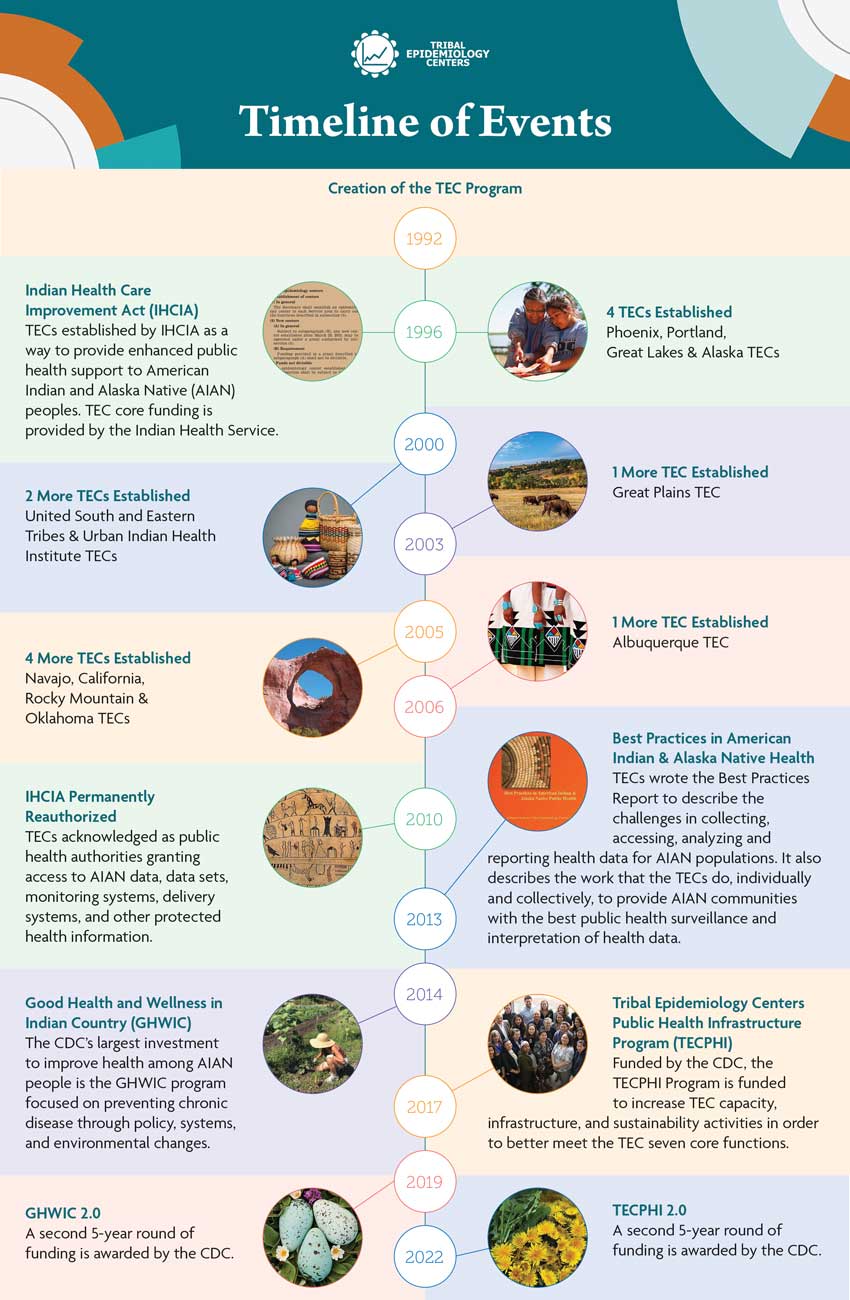Authorized by Congress in 1996, four Tribal Epidemiology Centers (TECs) were established by the Indian Health Care Improvement Act (IHCIA) as a way to provide enhanced public health support to American Indian and Alaska Native (AIAN) peoples, Tribes, Tribal organizations, and urban Indian organizations (T/TO/UIOs). Today, 12 TECs serve AIAN people and T/TO/UIOs in each of the 12 Indian Health Service Areas and one serves urban AIAN people across the nation. The reauthorization of the Indian Health Care Improvement Act (IHCIA) in 2010 acknowledged TECs as public health authorities. This law directs the Secretary of the Department of Health and Human Services (DHHS) to grant each TEC access to data, data sets, monitoring systems, delivery systems, and other protected health information (PHI) within the possession of the Secretary (25 USC 1621m(e)(1)).
Originally passed in 1976, the 1992 amendment of the Indian Health Care Improvement Act (IHCIA) stated that “it is the policy of this Nation, in fulfillment of its special responsibilities and legal obligation to the American Indian people, to assure the highest possible health status for Indians and urban Indians and to provide all resources necessary to effect that policy.” IHCIA established the legal and programmatic structure for providing health care and public health services to American Indian and Alaska Native (AIAN) people.
The 1992 amended Indian Healthcare Improvement Act (IHCIA) included authorization for the establishment of the Tribal Epidemiology Center (TEC) program- this authorization included establishing a TEC in each IHS Service area.10
In consultation with Tribes, Tribal organizations, and urban Indian organizations (T/TO/UIOs), the TEC program was created to enhance epidemiologic and public health support to American Indian and Alaska Native (AIAN) people and communities.
The permanent reauthorization of the IHCIA in 2010 designated TECs as public health authorities. In this role, TECs can access data, including protected health information, held by the US Department of Health and Human Services for various public health activities.11
The first four TECs were established in Alaska, Great Lakes, Phoenix, and Portland service areas in 1996. There are now 12 TECs, with one in each of the IHS service areas and one that serves UIOs across the country (Table 1).
8Indian Health Amendments of 1992, Pub. L. No. 102-573, §§ 101, 106 Stat. 4526 (1992) (codified at 25 U.S.C. §§ 1601 et seq.)
9Hoss, A., Ransom, M., Penn, M. (2015). “Tribal Epidemiology Centers Designated as Public Health Authorities Under the Health Insurance Portability and Accountability Act” accessed from https://tribalepicenters.org/wp-content/uploads/2019/06/TECs-as-public-health-authourities.pdf.
10Pub. L. No. 102–573, 106 Stat. 4526 § 214(a)(1)
1125 USC § 1621m(e)(1)

